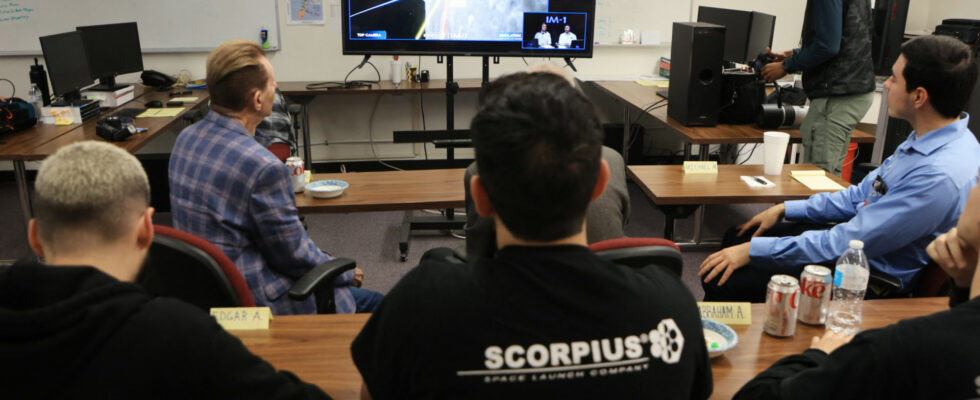Aviva Fried with AFP/Photo credits: DAVID SWANSON / AFP
It’s a big step for the space industry: a probe from the American company Intuitive Machines landed on the Moon on Thursday, marking the first moon landing of an American device in more than 50 years, and a first for a private company. “We can confirm without a doubt that our equipment is on the surface of the Moon, and that we are transmitting” a signal, Tim Crain, manager at Intuitive Machines, said during the company’s live video.
The latter then confirmed on X that the lander had landed “upright” and started “sending data”. The moon landing took place at 5:23 p.m. Houston time, Texas, where the company’s control room is located. The Nova-C lander, which notably transports NASA scientific instruments, measures a little over four meters high. He took off last week from Florida. The descent was the most feared stage of the mission, codenamed IM-1.
Lasers which would normally allow the device to guide itself did not work, but a backup solution was able to be used: a NASA instrument on board which was, originally, only to be tested during the mission . About ten minutes before landing, a significant thrust from the engine was used to slow down Nova-C, which was previously traveling at no less than 1,800 meters per second.
During the final descent, the probe was completely autonomous. Images are now awaited, including those of a small camera-equipped craft, developed by Embry-Riddle Aeronautical University, which was to be ejected from the lunar lander at the last moment to capture the moon landing from the outside .
American return
An American aircraft had not landed on the Moon since the end of the legendary Apollo program in 1972. “For the first time in more than half a century, the United States is back on the Moon,” he said. NASA boss Bill Nelson is congratulated in a video. And “for the first time in human history, a private company, an American company, took off and led the journey up there.”
India and Japan recently landed on the moon thanks to their national space agencies, becoming the fourth and fifth countries to do so, after the Soviet Union, the United States and China. But several companies – Israeli, Japanese and American – had so far failed to reproduce the same feat.
Lunar South Pole
The location that Intuitive Machines was targeting is located about 300 kilometers from the south pole of the Moon, a crater called Malapert A. The lunar south pole is of interest because there is water there in the form of ice, which could be exploited.
NASA wants to send its astronauts there from 2026 with its Artemis missions, and it is in particular to prepare them that it is seeking to study this still little-explored region more closely. “What kind of dust or dirt is there? How cold or hot is it? What is the radiation? These are things you want to know before sending out the first human explorers,” explained Joel Kearns , responsible at NASA.
For this phase of exploration, NASA is using its brand new program, called CLPS. Instead of developing ships for the Moon itself, the American space agency commissioned private companies to take its scientific equipment there. Intuitive Machines is one of the companies selected, and the amount of its contract with NASA for this first mission amounts to $118 million.
The objective is to reduce costs for the public agency, to be able to make the trip more frequently, but also to develop a lunar economy. And this despite the risks of failure. A first mission of the program, led by the American company Astrobotic, failed to reach the Moon last month.
Seven days of activity
The Intuitive Machines moon lander, the copy of which used for this mission is called Odysseus, also contains six private cargoes. Among them: sculptures by contemporary artist Jeff Koons representing the phases of the Moon.
NASA, for its part, has six scientific instruments on board. One of them must, for example, study lunar plasma (a layer of gas charged with electricity), and measure radio waves coming from the Sun and other planets.
Odysseus, which is powered by its solar panels, should now operate for around seven days, before night sets in on the lunar south pole.
